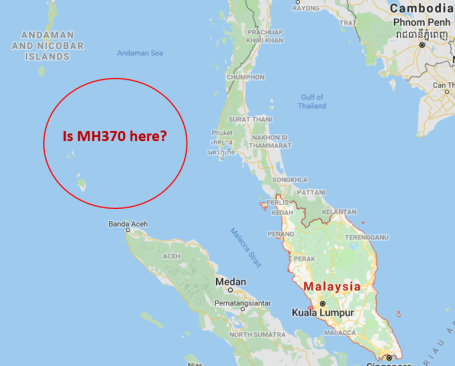The mystery surrounding the vanishing of MH370 continues. It seems amazing that in this age of satellite eyes and ears that such a thing could happen. It obviously engaged my attention deeply going by the number of posts I generated: ktwop MH370.
The mystery continues. A small amount of debris probably originating from MH370 has been found on various Indian Ocean islands. So it did probably end up in the Indian Ocean. But why it did remains as probably the most puzzling aviation mystery ever.
What I wrote 5 years ago, I think, still applies.
5 years on: MH370 needs to be revisited in the light of Boeing equipment malfunction
A week ago (8th March) it was 5 years since Malaysian flight MH370 – a Boeing 777-200ER – vanished without trace, taking 239 passengers and crew to their deaths. The disappearance is still a complete mystery but all the various theories include a sudden steep, fast climb to about 45,000 feet followed by a very sharp dive down to about 23,000 feet. Such an uncontrolled ascent would have caused a very rapid decompression (explosive or rapid) which, in turn, would have incapacitated all aboard.
The altitude excursion about 1 hour into the flight up to 45,000 feet could have rendered everybody on board unconscious. If it was done deliberately or otherwise is still the burning question. – ktwop
The disappearance of Flight 370 has been dubbed one of the greatest aviation mysteries of all time. Relying mostly on analysis of data from the Inmarsat satellite with which the aircraft last communicated, the Australian Transport Safety Bureau proposed initially that a hypoxia event was the most likely cause given the available evidence, although there has not been any consensus concerning this theory among investigators. – Wikipedia
It now looks increasingly likely that both the Lion Air crash in Indonesia (189 dead) and the Ethiopian Air crash (157 dead) were caused by equipment/software faults which ultimately caused rapid, uncontrollable descents.
It seems to me that Boeing’s liability for the deaths on Ethiopian Air is very likely. Boeing may well have liability also for the Lion Air deaths, especially if the unpreparedness of the pilots for sudden malfunction was due to incomplete manuals and/or a deficiency in the training provided.
It is the uncontrolled nature of descents which link the two latest crashes. In both cases the pilots tried to correct for the faulty equipment trying to push the nose down by climbing very rapidly. It begs the question whether this fault of the automatics pushing the nose of the aircraft down – by whatever combination of software and equipment – was what also caused MH370 to change altitude rapidly.
- Was an uncontrolled ascent due to the pilots trying to correct the automatics pushing the nose down?
- Did hypoxia then incapacitate the crew?
Could it be that the satellite evidence of the flight continuing (which is all interpretations of satellite data rather than clear physical evidence) is a red herring? Did MH370 actually go down soon after the final radar contact (Butterworth Air Base) was lost? Are the remains of MH370 actually lying at the bottom of the Indian Ocean a little to the west of Malaysia.












